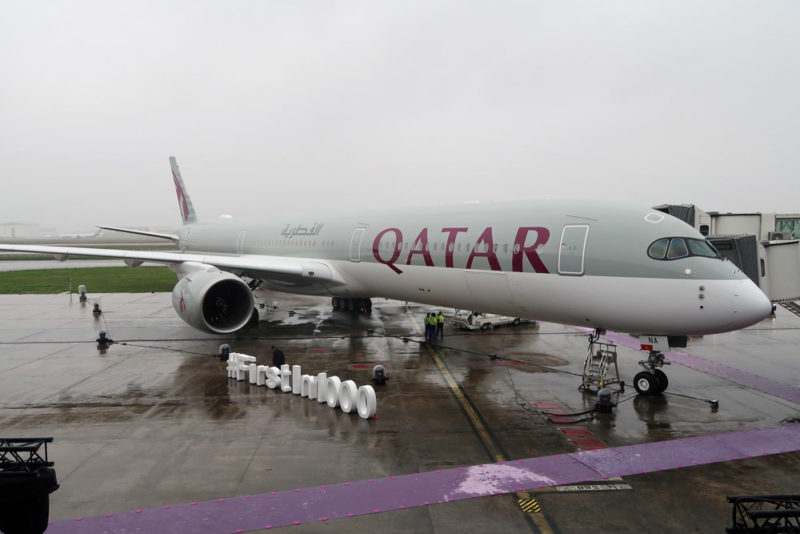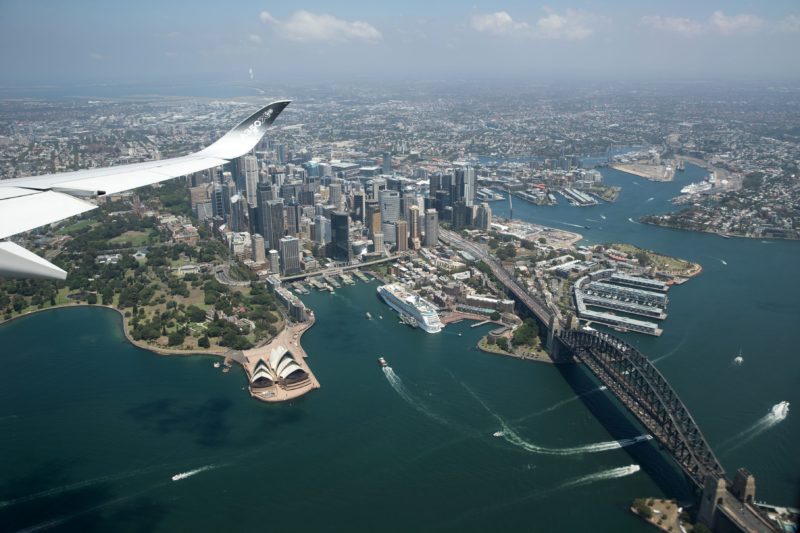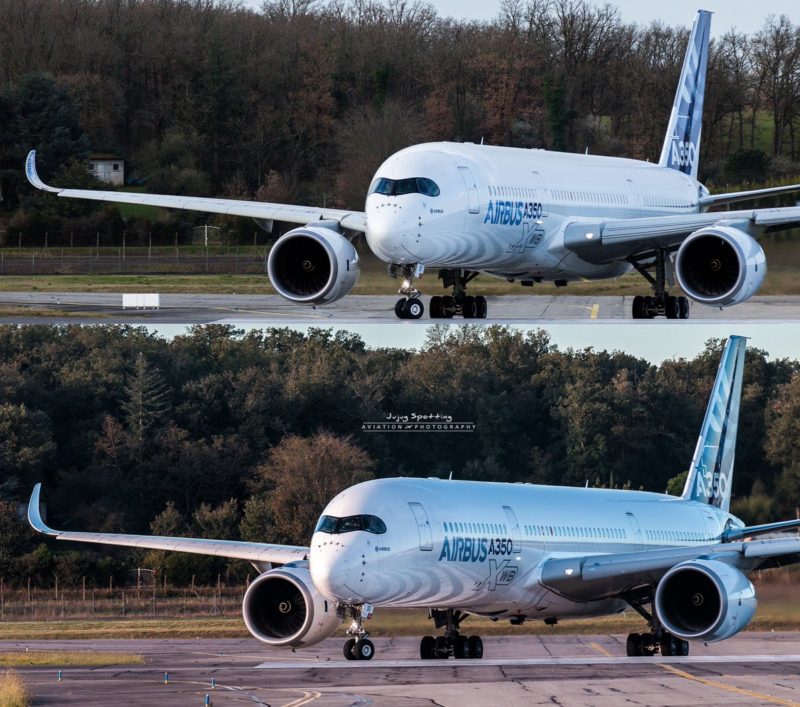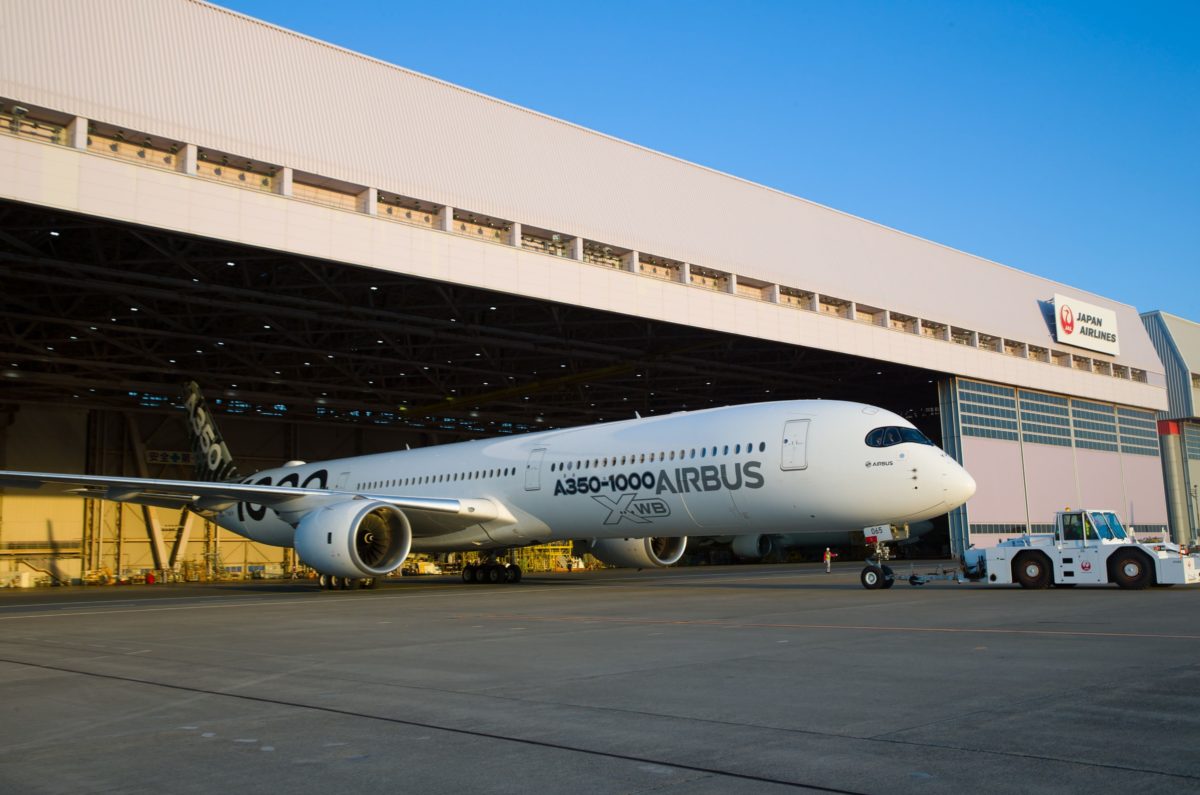The A350-1000 has received a range boost according to Airbus’ April 2019 edition of their Family Figures document.
Looking at the type certificate data sheet (TCDS) for the A350-1000 published by the European Aviation Safety Agency and updated on the 15th of May 2019, a new weight variant is not yet listed.
However, when viewing Airbus’ product brochure, the A350-1000 boasts a new maximum takeoff weight of 319t – a three tonne increase over the current highest of 316t.
The table below is sourced from the same TCDS, however has had the new WV inputted assuming WV003 is the 319t model. Note, WV003 is assumed. This information will be updated once the TCDS is updated.
| Weight Variant/Model Number | 000 | 001 | 002 | 003 | 004 |
| MTOW (t) | 308 | 311 | 316 | 319 | 308 |
| MLW (t) | 233 | 236 | 236 | 236 | 236 |
| MZFW (t) | 220 | 223 | 223 | 223 | 223 |
Adding to the MTOW increase to 319t, Airbus now listing the A350-1000 with a passenger capacity of 440 maximum seating or 350-410 in a three-class layout using 10-abreast figures to closer match Boeing’s offering with the 777X.
In a typical seating layout and with the MTOW increase, the listed range for the A350-1000 is now published as 16,112km (8,700nm) compared to its previous 15,600km (8,400nm).

It was at the 2018 Farnborough Airshow that Airbus hinted a further MTOW upgrade after only at the time recently increasing it by 5t to achieve the current 316t.
Qatar Airways group chief executive Akbar Al Baker originally hinted the increase to 319t during the 2018 show and stated the upgrade would make the aircraft “a very huge competitor for the [Boeing 777] -300ER”.
Additionally, Airbus reportedly told Qatar Airways they could increase the range of the A350-1000 by adding extra fuel tanks to work alongside the increased MTOW, however with a slight payload trade off.

It’s unknown if Airbus will make a formal announcement regarding this upgrade or if there’ll be any further developments, however this upgrade comes as the competition with Boeing becomes highly aggressive to win an order for Qantas’ Project Sunrise.
Now that Qantas has asked Airbus and Boeing to submit their final offer by August this year, with a final decision being made by the end of year, the adrenaline involved to present a viable aircraft skyrockets.
Airbus recently confirmed both A350 variants are capable of operating the non-stop flights from the east coast of Australia to Europe and New York.
Being an all-new platform, Airbus has plenty of room for further upgrades and performance boosts, as seen in the past, with new weight variants to optimize the aircraft on different routes.
Additionally, the single major component that passengers love, the wing, has received its fair share of tweaks, with 50cm taller sharklets being introduced, a revised wing twist, reduced carbon layers on the wing to reduce weight and redesigned flap fairings.

Towards the end of 2018, writers with a sharp eye identified Airbus was hiring in Toulouse in Madrid to develop an A350neo. Sounds too soon, right?
If launched, the aircraft won’t be around until the mid-2020s after Rolls-Royce and Pratt and Whitney submit an offering of their latest ground-breaking engine designs, being the UltraFan and scaled Geared Turbofan.
In the age of heavy digitization in the design process, Airbus and Boeing are able to constantly revise components and structures, squeezing out every bit of performance of fuel burn reduction.
After all, every kilogram, every per cent, every performance increase counts in the day where environment is becoming a major topic of concern.




